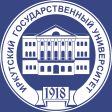List of issues > Series «Political Science and Religion Studies». 2024. Vol 48
“Shamanic Illness” of the Prophet Ezekiel:
Criticism of the Concept
Gasymov A.B. “Shamanic Illness” of the Prophet Ezekiel: Criticism of the Concept. The Bulletin of Irkutsk State University. Series Political Science and Religion Studies, 2024, vol. 48, pp. 140-149. https://doi.org/10.26516/2073-3380.2024.48.140 (in Russian)
1. Hossfeld F.L. Kniga proroka Iezekiilya [Das Buch Ezechiel]. Vvedenie v Vethij Zavet [Einleitung in das Alte Testament]. Moscow, BBI Publ., 2008, pp. 639-663. (in Russian)
2. Eliade M. Shamanizm i arhaicheskie tekhniki ekstaza [Le Chamanisme: et les techniques archaïques de l'extase]. Moscow, Ladomir Publ., 2015, 552 p. (in Russian)
3. Baker D. Korean spirituality. Honolulu, University of Hawai'i Press, 2008, 166 p.
4. Rudolph W., Elliger K., Kittel R. (eds.) Biblia hebraica stuttgartensia. Stuttgart, Deutsche Bibelgesellschaft, 1997, 1646 p.
5. Ch'oe K. The symbolic meaning of shamanic ritual in Korean folk life. Journal of Ritual Studies, 1989, vol. 3, no. 2, pp. 217-233.
6. Grabbe L.L. Shaman, preacher, or spirit medium? The Israelite prophet in the light of anthropological models. Prophecy and the prophets in Ancient Israel, 2010, pp. 117-132.
7. Jacobs M.R., Person Jr R.F. Israelite prophecy and the Deuteronomistic History: Portrait, reality, and the formation of a history. Atlanta, Society of Biblical Lit, 2013, vol. 14, 254 p.
8. Kapelrud A. Shamanistic features in the Old Testament. Scripta Instituti Donneriani Aboensis, 1967, vol. 1, pp. 90-96.
9. Kendall L., Yang J., Yoon Y.S. God pictures in Korean contexts: The ownership and meaning of shaman paintings. Honolulu, University of Hawai'i Press, 2015, 176 p.
10. Kim C. Korean shamanism: The cultural paradox. New York, Routledge, 2018, 270 p.
11. Kim T.G. et al. Korean folklore. Seoul, 1983, 312 p.
12. Lee J.Y. Korean Shamanistic Rituals. Religion and Society. The Hague, Mouton, 1981, 249 p.
13. Menges K.H. Korean Shamanism. Central Asiatic Journal, 1983, vol. 27, no. 3/4, pp. 249-278.
14. Miller R.D. Shamanism in early Israel. Wiener Zeitschrift für die Kunde des Morgenlandes, 2011, vol. 101, pp. 309-341.
15. Muller F.M. Introduction to the Science of Religion: four lectures delivered at the Royal Institution in February and May 1870. London, Longmans Green And Co., 1893, 342 p.
16. Nissinen M. Why Prophets Are (Not) Shamans? Vetus Testamentum, 2020, vol. 70, no. 1, pp.124-139.
17. Overholt T.W. Prophecy in cross-cultural perspective: a sourcebook for Biblical researchers. Atlanta, Scholars Press, 1986, vol. 17, 368 p.
18. Rhie Y.C. Toward an Authentic Korean Biblical Reading: Shamanism and the Bible in Dialogue. Sheffield, University of Sheffield, 2013, 282 p.
19. Vogels W. Les récits de vocation des prophètes. Nouvelle Revue Théologique, 1973, no. 95, pp. 3-24.
20. Wacker M.T. SchamanInnen in der Welt der Bibel: ein kulturvergleichendes Experiment. Schlangenbrut, 1997, no. 57, pp. 17-21.
21. Wilson R.R. Prophecy and society in ancient Israel. Philadelphia, Fortress Press, 1980, 322 p.
22. Yun K. The shaman's wages: trading in ritual on Cheju Island. Seattle, University of Washington Press, 2019, 256 p.
23. Zevit Z. The prophet versus priest antagonism hypothesis: Its history and origin. The priests in the prophets, 2004, pp. 189-217.
24. Zhelobtsov F.F. On the problem of studying shamanism in the Yakut and Korean culture. SHS Web of Conferences. EDP Sciences, 2022, vol. 134, pp. 1-6.


